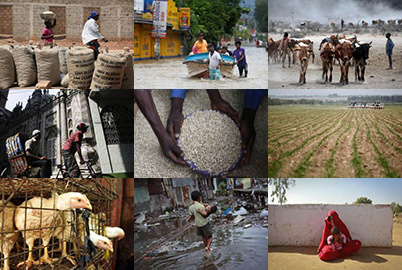- How do you get a humanitarian crisis into the headlines? And how can you convince editors to keep covering it? A new study by U.S.-based media analysts CARMA International may provide a few pointers.
The survey of disaster reporting in newspapers in the United States, Australia and Europe found that it is not human suffering but Western self interest that dictates how disasters are covered in the press.
&${esc.hash}39;The ultimate challenge for victims of disasters and those who wish to help is to capture and sustain media attention by using national economic and political self-interest as hook,&${esc.hash}39; Tom Vesey, managing director of CARMA International, said in a statement.
The authors scrutinised the content of 64 daily and weekly newspapers from nine countries for coverage of Hurricane Katrina, the Asian tsunami, Bam and Kashmir earthquakes, Darfur and Hurricane Stan. Here are some of the key findings:
-
Hurricane Katrina dominated with 50 percent of the coverage. The Indian Ocean tsunami came second with a quarter of the coverage, followed by Darfur with 15 percent, and Bam, Kashmir and Hurricane Stan making up the remaining 10 percent.
-
There was no direct link between the number of people who died and the amount of coverage. The death tolls for Darfur and the tsunami were similar, but Darfur received much less coverage. The 2003 Bam earthquake in Iran attracted the same level of media coverage as Kashmir, even though 3.5 times more people died in Kashmir.
-
The U.S. press provided the most coverage of humanitarian crises.
-
Media reports on Katrina focused on the political and economic implications of the disaster &${esc.hash}39; only 27 percent looked at the suffering of the survivors.
-
Some of the language used had racist overtones, including widespread reports of black groups raping and pillaging in New Orleans &${esc.hash}39; many of which turned out to be false.
-
40 percent of the tsunami coverage focused in Westerners affected, even though only 900 Westerners died compared with a total of 230,000 dead or missing.
-
The German press gave three times more coverage to Katrina, in which no Germans died, than to the tsunami, in which they lost more lives than any other European country.
-
Food shortages were mentioned far more than water shortages.
-
In all the disasters except Bam, local government relief work was criticised.
-
In some cases there was less coverage of crises involving celebrities than those without.
Our Standards: The Thomson Reuters Trust Principles.

